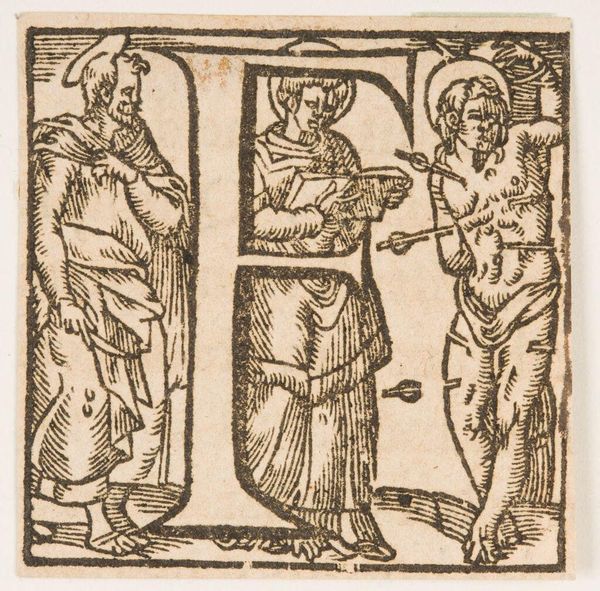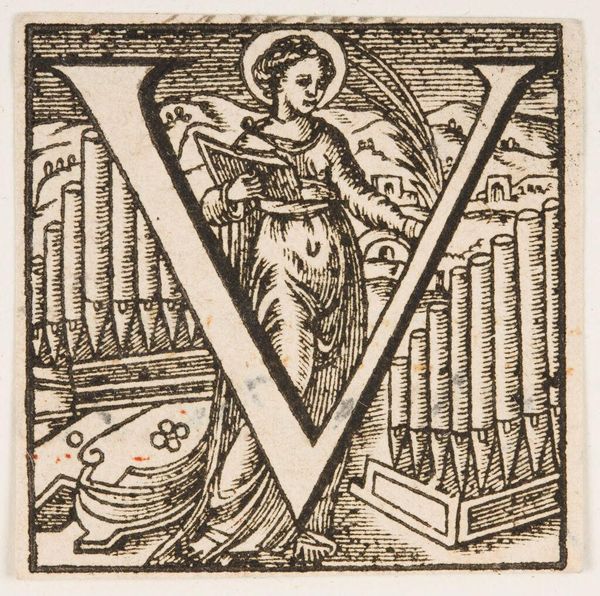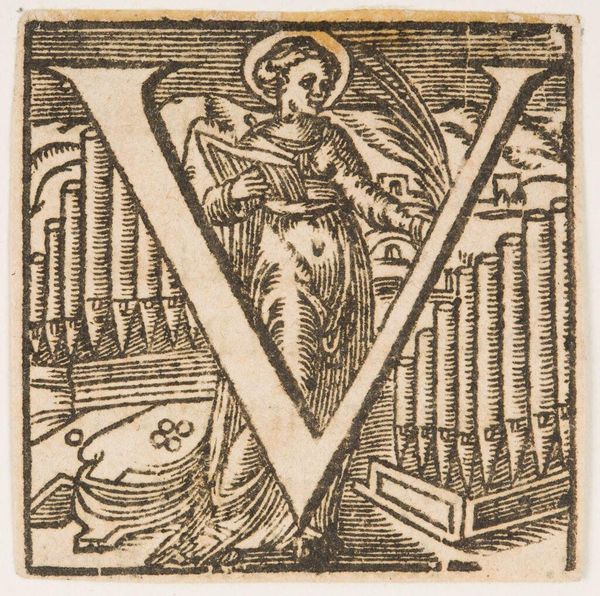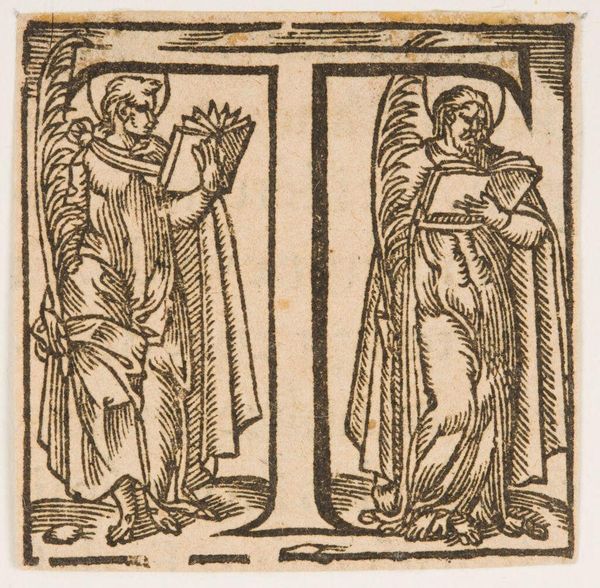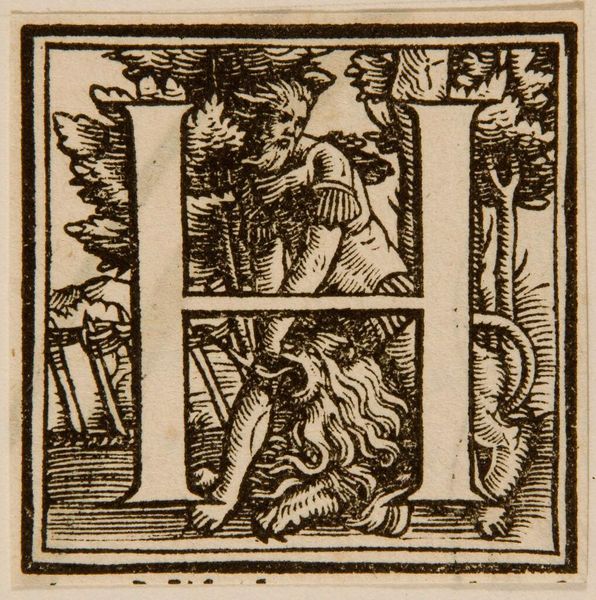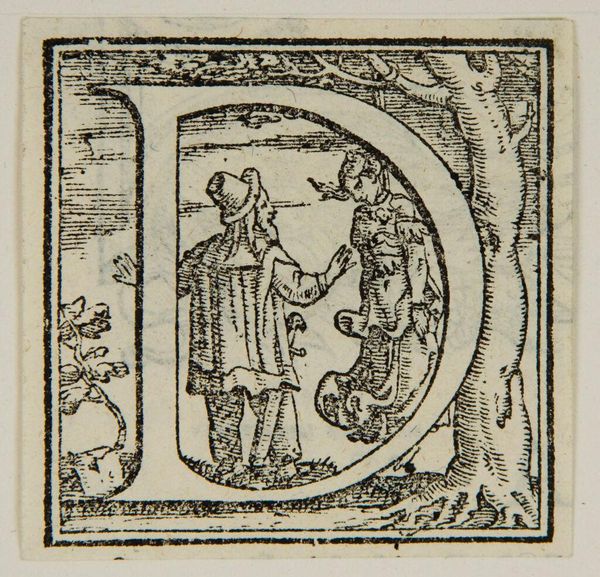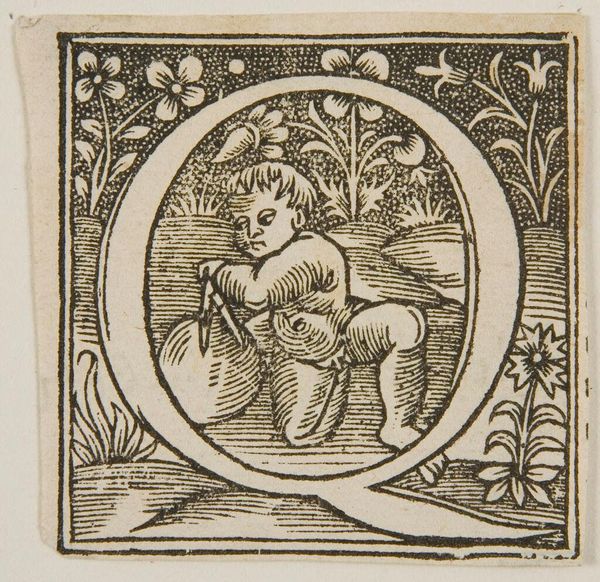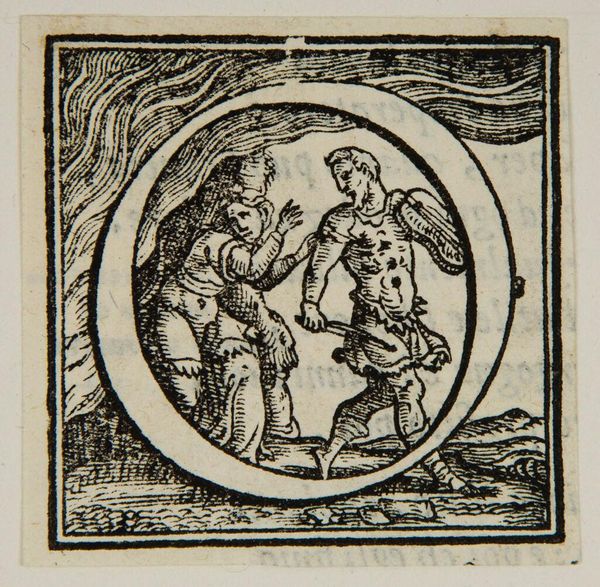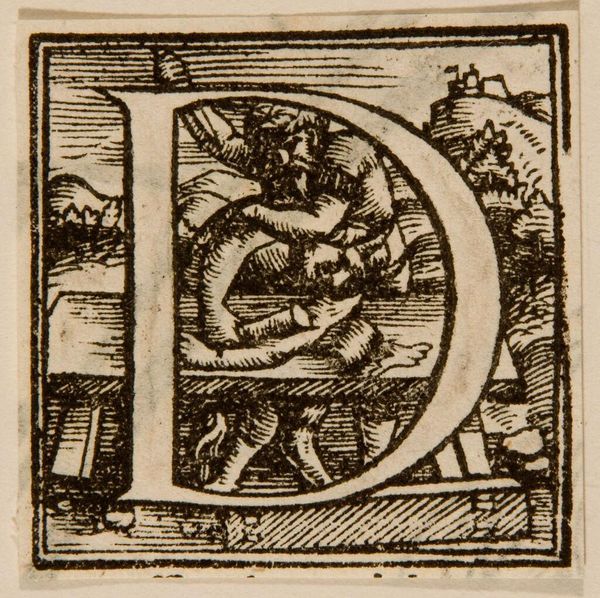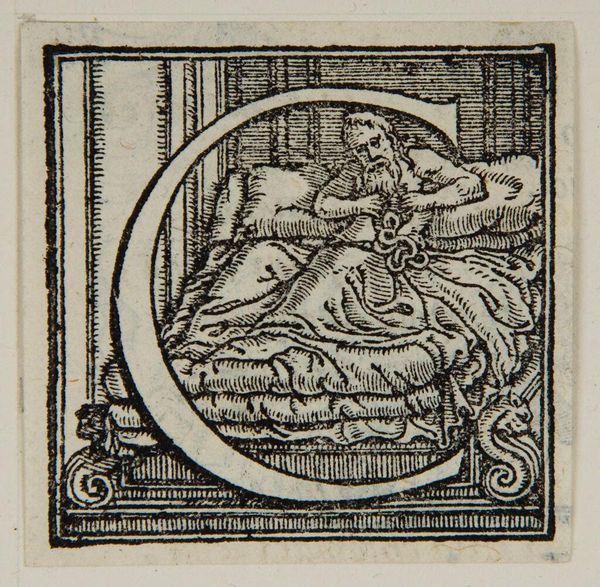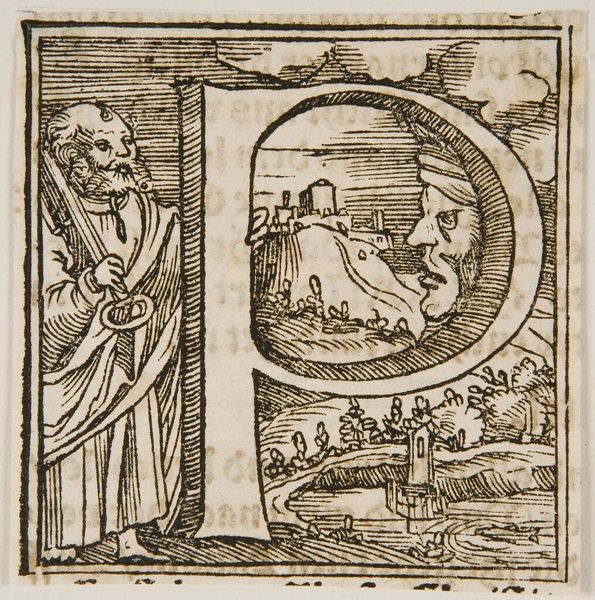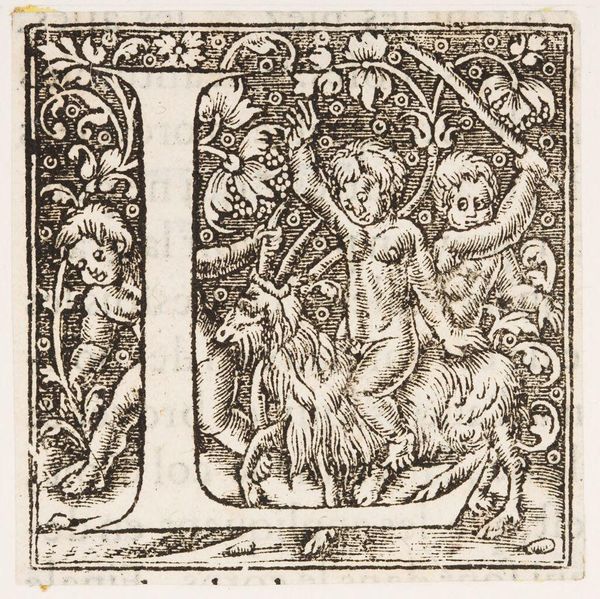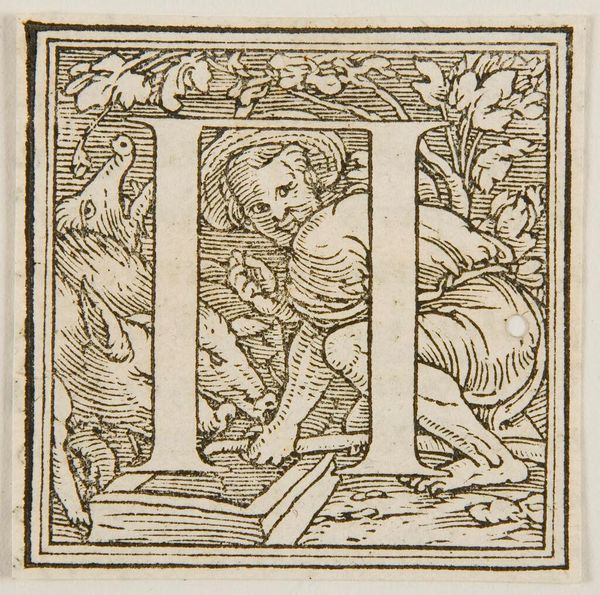
Copyright: CC0 1.0
Curator: This is the woodcut print “Letter G,” housed here at the Harvard Art Museums and created by an anonymous artist. The initial letter frames a standing female figure. Editor: It strikes me as a very contained image; the dark lines of the letter and drapery box her in. It feels almost like an assertion of knowledge being confined. Curator: Given that the piece is a woodcut, likely mass produced, and meant to accompany a text, how might the artist have approached the carving process? What tools and labor practices were in use? Editor: I am more drawn to the woman herself. The book and staff she carries suggest power, perhaps knowledge being wielded as authority in a male-dominated society? The halo implies saintly status. Curator: It could be argued that the texture itself—the gouges left by the tools—is a statement of both the time and labor invested in producing this letter for widespread consumption. Editor: Yes, but it's also important to think about the figures that are excluded from these images. Who had access to literacy, to power, and whose stories are not being told here? Curator: A good reminder that the value lies not just in the image, but in the material conditions that allowed it to be made and disseminated. Editor: Precisely, and by critically examining its place in history, we can also see its limitations and biases more clearly.
Comments
No comments
Be the first to comment and join the conversation on the ultimate creative platform.
